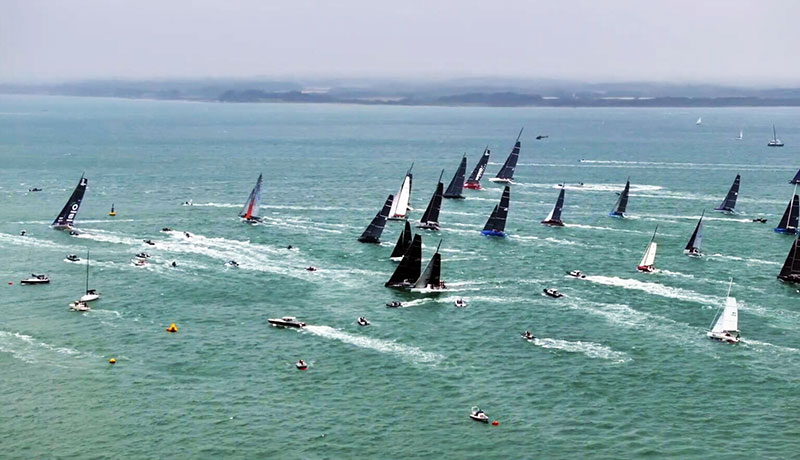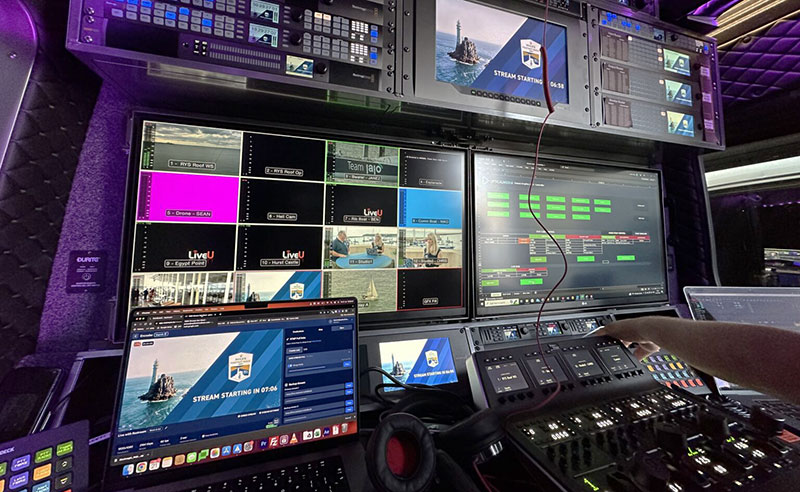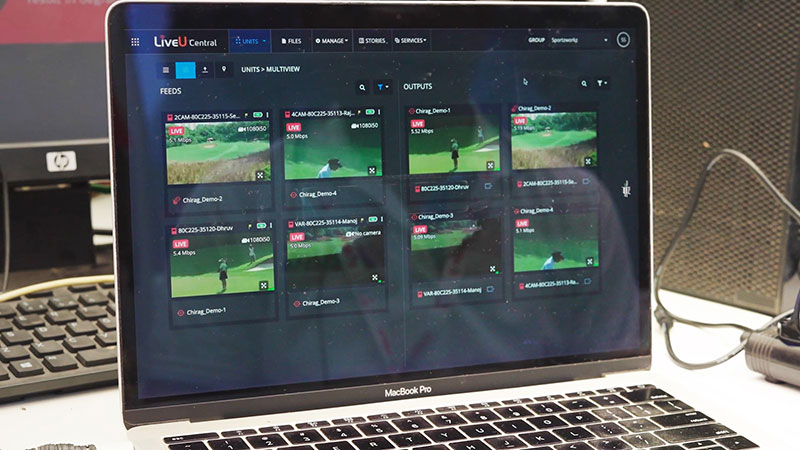Optical Media produced coverage from Fastnet using LiveU’s cost-efficient On-Site Production system, allowing full control of connectivity and the contribution network with minimal set-up.

The biennial Fastnet Race is one of the largest, most competitive offshore yacht races in the world. It begins at Cowes on the Isle of Wight in late July, travels around Fastnet Rock off southern Ireland, and finishes in Cherbourg, France, after venturing out into the Atlantic Ocean. Royal Ocean Racing Club, organisers of the race, hired streaming and broadcast production company Optical Media to produce coverage of the start of the event.
James Light, Founder of Optical Media, said, “This was our first year working on the Fastnet Race. We covered the start, which took approximately three hours. We wanted to capture the full atmosphere of the day to produce really dynamic coverage from the shore and the water. Shooting from the water was crucial but was also where the real challenges lay.”
RF Systems
Initially looking at RF systems, over and above fibre connectivity for parts of the shore-based coverage, the company knew that the task might be cost-prohibitive. James said, “RF has various limitations. For example, it requires a clear line-of-sight, but because we had cameras in several positions, achieving that was challenging. Given the budget we had, setting up the number of RF systems we would need to mitigate this issue would have been unaffordable.
“So, while RF would need to be part of our overall toolkit, we also looked for another, more cost-effective, integrated approach." A fully remote style of production, although fairly straightforward and less expensive, was also not going to be suitable – onsite production, despite its cost and complexity, gives producers lots of control over the output and was what the Royal Ocean Racing Club preferred.
Cloud-based On-Site Production
Optical Media chose to work with the LiveU On-Site Production system to set up bonded wireless transmission by combining multiple cellular connections. The team was able to transmit video from LiveU transmitter field units – two on the shore and one in a camera boat on the water, moving at 15-20 knots – directly into the Racing Club’s production truck. Equally important, set-up was minimal. This approach avoided the cost and complexity of installing RF antennas, running cables, sourcing internet connections and so on.

LiveU On-Site Production is cloud-based and does most of the configuration and connection work automatically, establishing wireless transmission from a LiveU field unit to a mobile receiver – in this case installed on the OB truck. The workflow delivers video from the field unit via a bonded cellular uplink to LiveU’s LU-Link cloud service and from there, via bonded downlink, to the vehicle.
In the truck, the LiveU receiver is connected to a portable LiveU Xtend unit serving as a super-bonded link for incoming signals. With this bonded IP connectivity running the receiver, it can be located anywhere and still support the system’s downlink. As a result, users do not have to work through a managed wired network to receive live feeds.
Instead, an operator first sets up a server on site and works through the user interface of LiveU Central feed management software. Clicking the LU-Link cloud service button in the UI automatically configures the wireless network, there in the field, and bypasses network and firewall settings. LiveU’s LRT protocol optimises the transfers at either end.
Unmanaged Networking
This workflow involves several components but because the networking tasks are cloud-based and automated, the process for the user is in software and relatively simple. The system is resilient and able to preserve signal quality, including 4K video, and supports an unlimited number of camera locations. Meanwhile, fewer staff are required and RF line-of-sight infrastructure is also reduced.
James said, “LiveU's On-Site Production hinges on the LU-Link cloud service, which allows us to host the LiveU Server within an unmanaged network and gives us a quicker, more agile server set-up. Working in an environment where we would typically have to borrow internet connectivity, having a service that just involves plugging in a server makes a complex job very simple.

“We only have to connect the field units to the server and the server to the internet and can then immediately run a full LiveU system. The system is very cost-effective, and we encountered no problems on the day.”
The OB vehicle was next to the Royal Yacht Squadron building where the race officers started the race from, and once the three LiveU units were connected, a flexible, reliable infrastructure was in place to create the coverage as needed. From the on-site production server, an SDI feed was output, ready for any post production processes to be applied.
Full Control
James said, “Having full control of a network when we’re on-site is incredibly rare – we are always working in environments where we don’t have any network control. Sailing in particular is very challenging, but into the future, by using LiveU as a key partner, we anticipate being able to work in almost any environment.”
Matthew Stringer, UK Sales Director, LiveU, said, “Many great sports stories are told outside of cabled and connected venues, but scouting locations, applying for RF frequencies, negotiating for network access and then planning around the constraints of line-of-sight all add complexity, cost and time to a production. The LiveU On-site Production intends to return the focus entirely to creating compelling content.” www.liveu.tv




